How to choose a heater for the floor: a comparative overview of 10 different options
The question "What insulation is better for the floor?" all who love comfort are asked. It’s always nice to walk barefoot without fear that your limbs will freeze. And this is especially true in the off-season, when central heating (if any) has not yet been switched on, and in winter, when the temperature is below freezing. Then people often turn their eyes to insulation for the floor. How to choose the material and how to properly lay it, we will tell. After all, a well-insulated floor is one of the components of the preservation of heat in a residential building.
When choosing heaters, it is important to take into account the climatic zone (how much it can still be cold in winter), the features of the room and its purpose, the type of existing or planned flooring. For example, insulation for the floor in an apartment and in a wooden house will vary significantly.
Content
Option # 1 - expanded polystyrene
Among the materials that do not require communications or a network connection, the most common insulation for a warm floor is polystyrene foam, well known to everyone as polystyrene.
Its thermal insulation properties are 25 times better than that of expanded clay concrete. And to walk on the floor insulated with polystyrene foam is much warmer and more pleasant, because such a floor absorbs heat very slowly.
Polyfoam as a floor insulation is used when installing a floating screed. Then it is poured with a layer of cement or concrete. It is possible to lay the slabs between the logs during the construction of wooden floors. Another way - the plates are laid on a concrete floor, and on top of them - sheets of plywood.
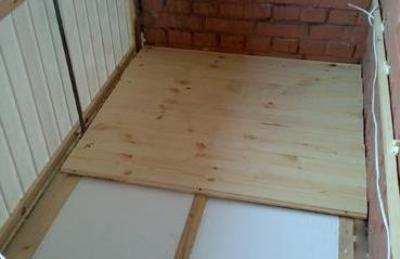
Option # 2 - expanded clay
Expanded clay - one of the most affordable affordable materials. It is used both when mounting a dry floor screed, falling asleep under gypsum boards, and is added to concrete. Using expanded clay, a floating floor screed is also constructed when concrete or cement mortar is poured over it.
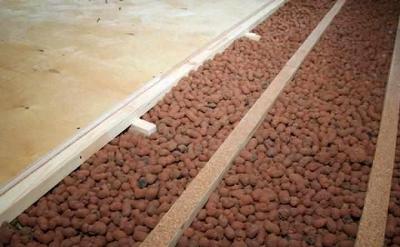
The porous structure of this material, made of clay, allows you to provide thermal insulation of the floor, even in areas with very cold and frosty winters. But for this, the expanded clay layer should be about 10-15 cm, which is not always convenient, because it reduces the existing living space.
Option # 3 - polystyrene concrete
Compared to expanded clay and conventional screed, the thickness of the floor insulation based on polystyrene concrete is much thinner. Enough 5 cm of material to provide both heat and sound insulation of the room. And the pressure on the ceiling in this case will be less, and the floor can be leveled, and floor insulation can be provided.
Almost all materials, including tiles, can be lined on top of the polystyrene concrete layer. In addition, it will create a perfectly flat surface under the bulk floors.
Option # 4 - glass wool and mineral wool
These types of insulation are widely used for insulation of roofs, walls and floors in view of their low cost. There are such materials in the form of plates or in rolls.They are most often used for warming wooden floors due to the vapor permeability of the material.
Lay mineral wool and glass wool between the lags. But the composition of these materials makes you wonder: the release, although in safe standards, is still present of hazardous chemicals.
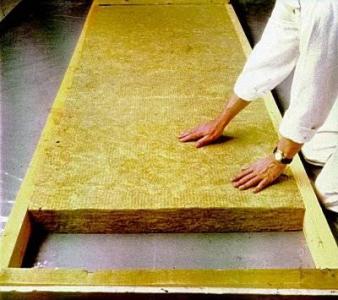
Glass wool must be carefully insulated so that dust does not get into the room when it wears out. When laying such materials, it is important to leave a ventilation gap. The disadvantages of these materials include their weight and moisture absorption.
Option # 5 - cork material
To insulate the floor with light, safe and thin material, cork fiber is used. This is the best insulation for the floor under linoleum. The best, but also one of the most expensive. In addition to thermal insulation qualities, it has durability and moisture resistance.
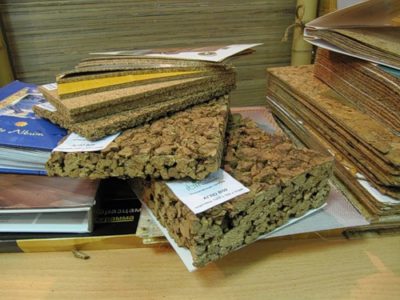
This material can be laid both in the form of a substrate for floor coverings, and used as an independent floor covering. In the latter case, cork boards are additionally polished and varnished. It will turn out a natural beautiful warm floor.
Option # 6 - sawdust insulation
By themselves, sawdust for insulation is no longer used. They do not meet the fire safety requirements. But of them, with the addition of flame retardants, antiseptics and glue, sawdust pellets, arbolite, ecowool are produced.

Option # 7 - Ecowool
This loose cellulose-based material is used to warm even hard-to-reach spots. It is poured automatically or manually with a layer of 15-20 cm, which, according to the thermal characteristics, corresponds to an expanded clay layer of 80 cm.
Ecowool has soundproofing and heat-insulating properties, is completely safe. But such material is afraid of moisture. Therefore, it is laid only in those places where there is no likelihood of an increase in humidity. Use it most often when laying wooden floors.
Option # 8 - Penoizol
Simply put, penoizol is a liquid polystyrene foam, of which we have already discussed all the positive aspects. Penoizol is good because, due to its consistency, it can be poured into hard-to-reach places, they close up cracks and seams.
It is good to use it in the early stages of construction and equipment at home. It fills all air voids, thereby preventing the outflow of heat in the future.
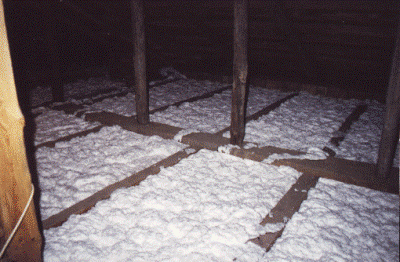
Option # 9 - foil insulation
The action of the material is based on the fact that it reflects heat back to the room, but does not transfer it to the external environment. Therefore, correctly lay it with the reflecting side up. This material is durable, waterproof, therefore it can be used in all types of rooms, including baths and saunas.
As you can see, there are plenty of materials for warming your floor, no matter in which room it is. It is important to take into account all the nuances and choose the most effective and safe insulation.

An additional option is the “warm floor” system
Increasingly, people are choosing a floor heating system. In the case of a water system, pipes are laid under the floor surface through which hot water will circulate. The method is effective, but troublesome. Indeed, in addition to the pipes themselves, risers, collectors, stop valves, an automatic control device (shutdown) will be needed.
For the installation of modern underfloor heating systems, as a rule, polymer pipes are used. Such pipes are very durable, resistant to thermal aging, have plasticity and flexibility, are not afraid of corrosion.
You can also make an electrical system: in this case, a cable is laid under the floor covering, which converts the current into heat. A layer of 3-7 cm of concrete or cement-sand mortar is laid on top of the heating elements, and only then a floor covering. Those. if a breakdown occurs, you will need to completely dismantle the floor.
There are infrared heated floors. Such floors are much easier to install and operate. Film underfloor heating does not require a screed; it is quickly mounted and connected. On top of this floor you can lay linoleum, tile, parquet, laminate. This system can be easily removed and moved to another room.
Convenience and effectiveness of warm floors makes them the most popular for residential and public buildings (kindergartens, schools, sports complexes).

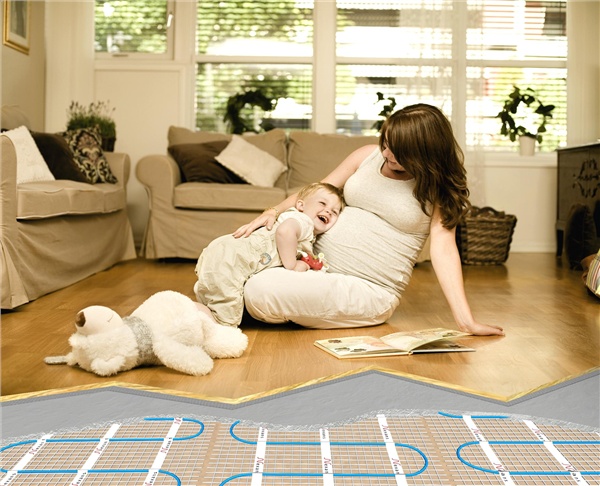

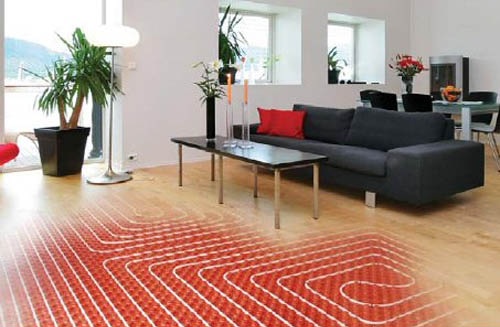
4 comments